
Institutional
From Slack Threads to Strategy Retreats: Two Years of SFC
25 August 2025
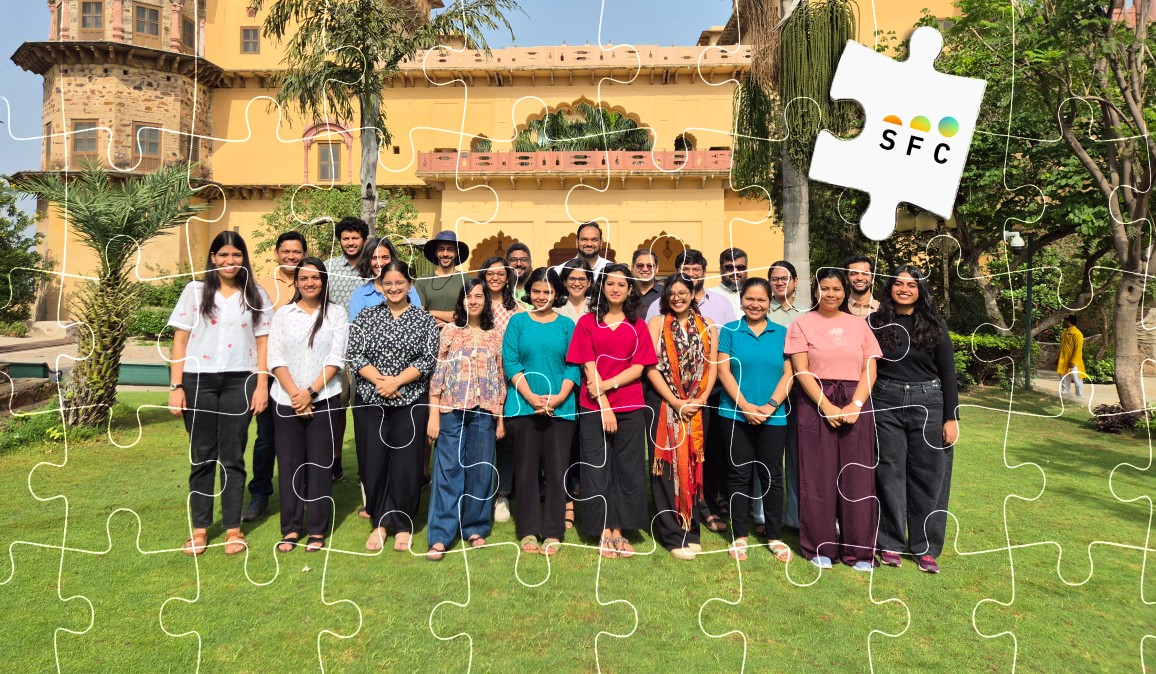
Origin story
A little over two years ago, many of us at the Sustainable Futures Collaborative (SFC) sat in a conference room, coffee mugs in hand, plates of banana chips within reach, trying to answer what felt like a deceptively simple question: what should we call the organisation we were creating together? We wanted a name that captured what we stood for: rigorous, independent and collaborative research that could help shape India’s environmental and climate future(s), centred on principles of sustainability, justice, and resilience.
Dozens of names were thrown around, with a handful making it to a vote on Slack. The accompanying message thread ran to nearly a hundred replies. As happens with research organisations, abbreviations starting with – or having too many – C’s and E’s had their moment of glory before we collectively decided to not get “drowned in a sea of Cs”. Multiple options were discussed, deliberated, voted on, and vetoed.
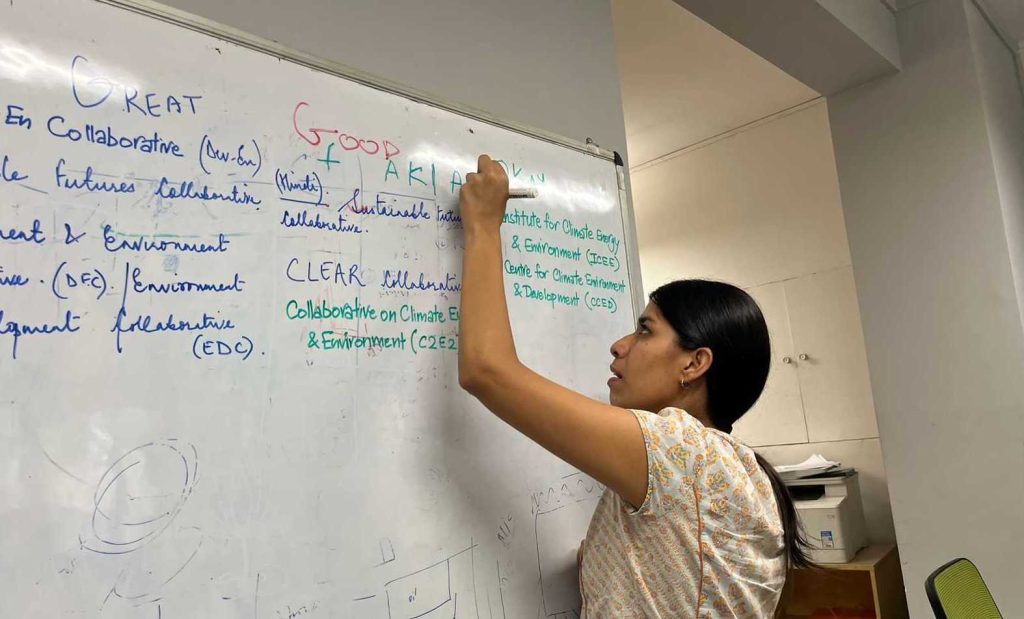
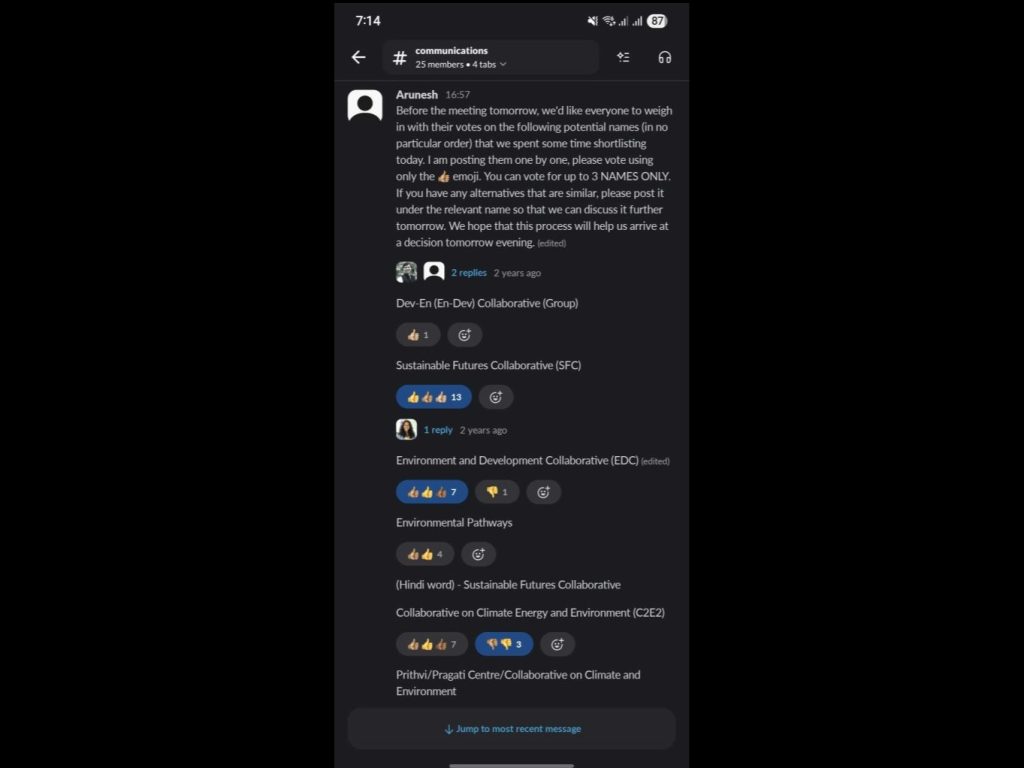
It felt ordinary at the time, just a few of us gathered together and tossing ideas around. In hindsight, it was the start of something bigger. Starting a new organisation was a leap into the unknown, but it also presented a rare chance to create something that was built on shared principles: to focus on climate, energy, and environment challenges; to look for upstream levers of change; to design policy instruments rooted in rigorous research; and to work with others to make systemic transformation possible.
Fast forward two years, we have launched SFC, published perspective papers, released impactful research, established new government partnerships, and strengthened existing engagements. We have also said (temporary) goodbyes to a few colleagues who moved on to higher education, and welcomed close to a dozen new ambitious and energised young researchers into the fold. This seemed like an opportune time to reconvene to not just assess whether we have held true to the values we signed on to two years ago, but to chart a course for the future that takes stock of the evolving policy landscape. So in June 2025, with curiosity and possibility in the air, we gathered in Alwar for our strategy retreat.
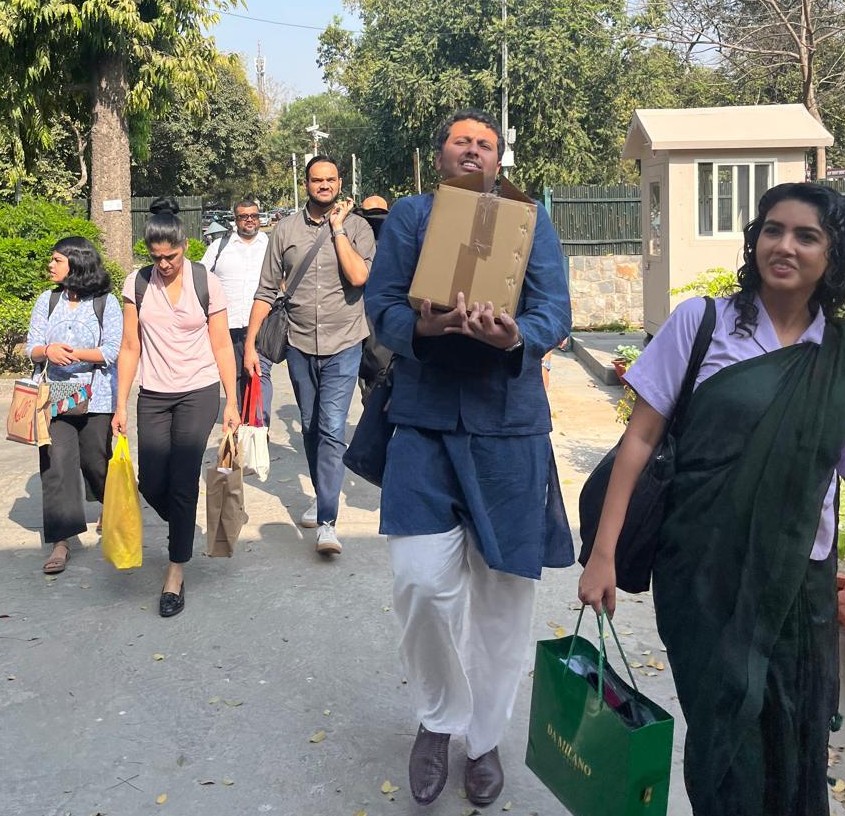
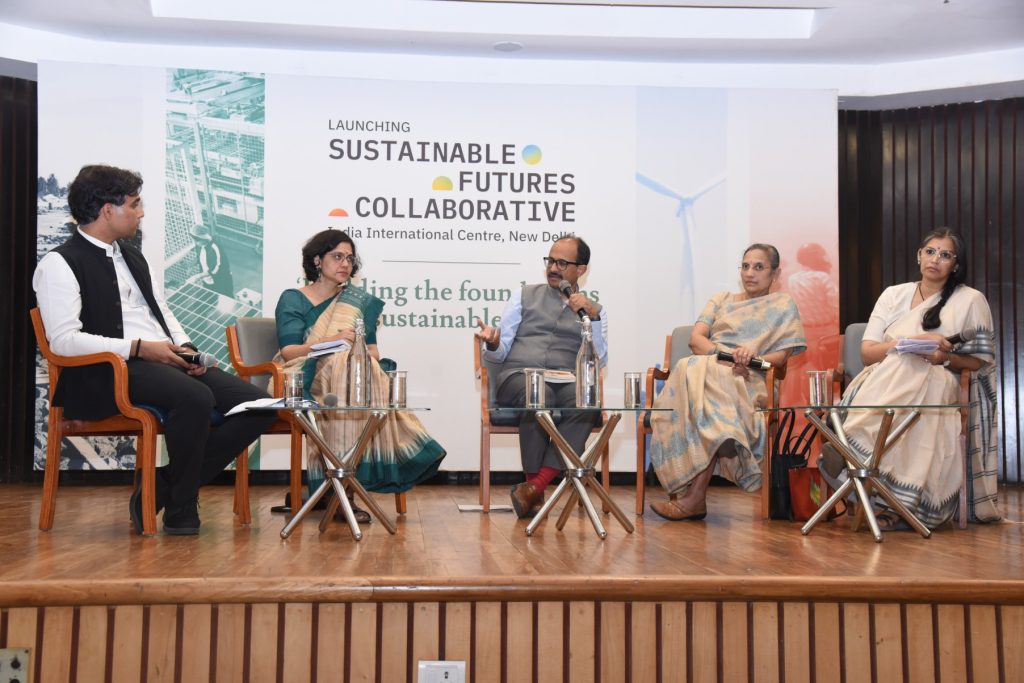
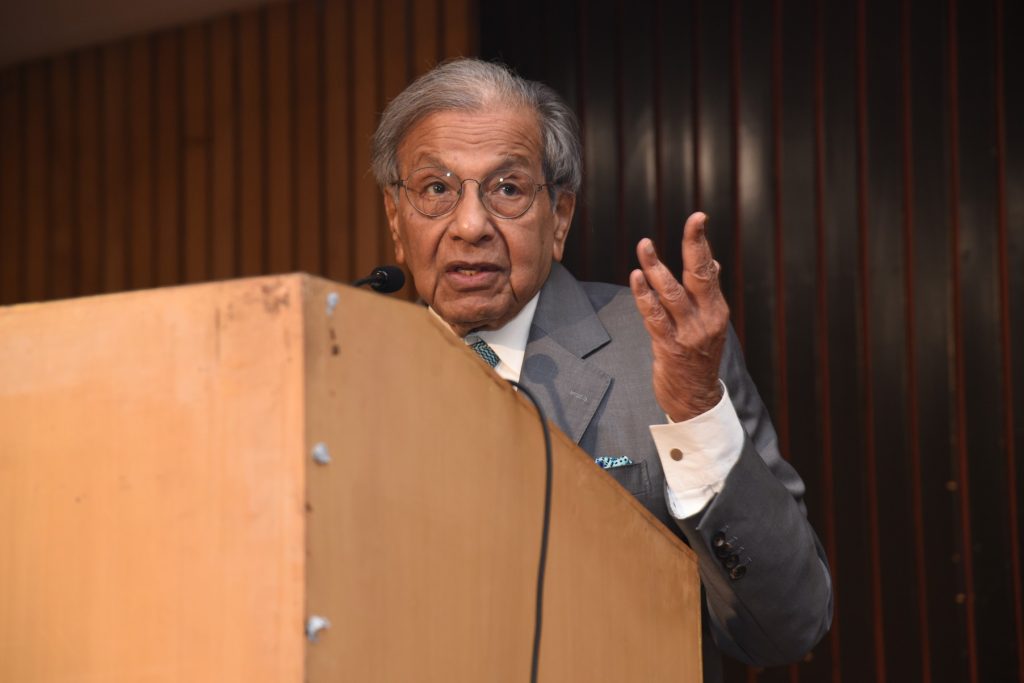
Looking back while looking forward
Just a year earlier, when we had temporarily housed ourselves in the basement of a co-working space, our “office-finding committee” explored dozens of potential homes for SFC, imagining a place that could support both quiet thinking and spirited debate. Eventually we found it, inclusive of a snack corner that quickly became our unofficial gathering spot. Arriving at that decision of where our future home would be also involved the kind of spirited debate we hoped to bring to our work going forward, with every member of the team having the space to share their views.
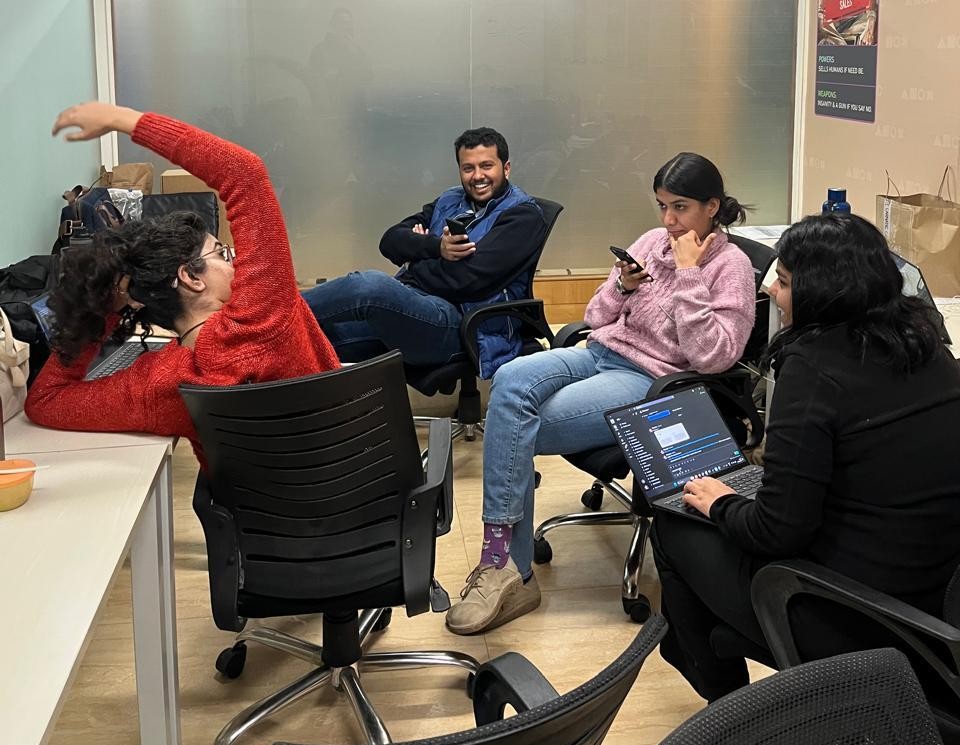
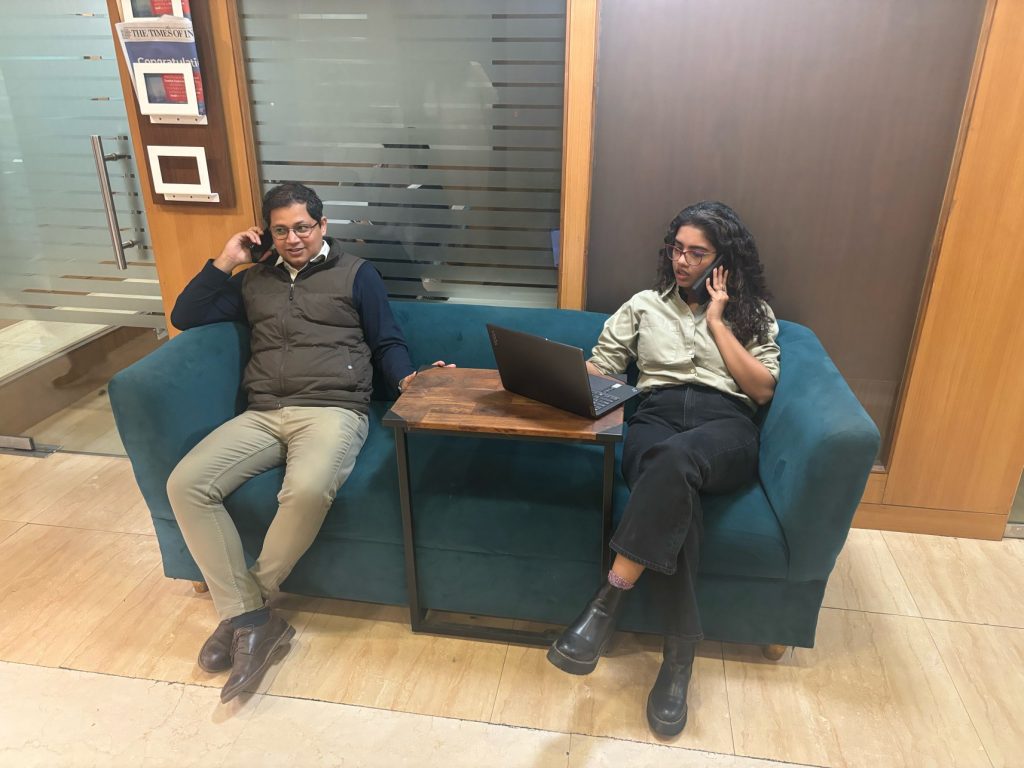
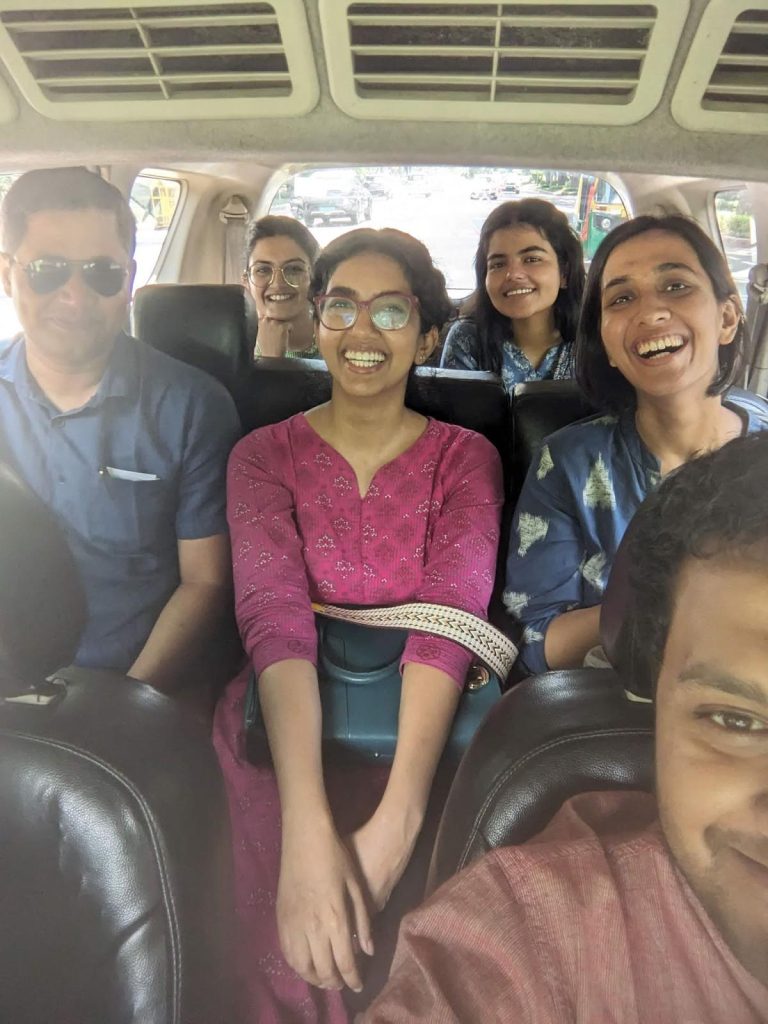
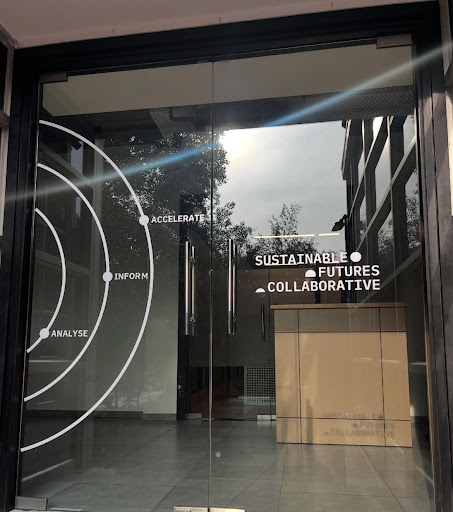
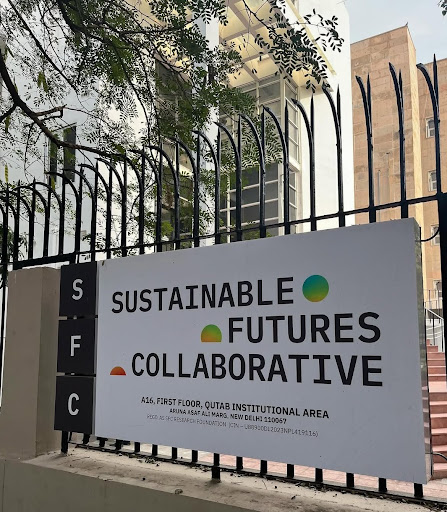
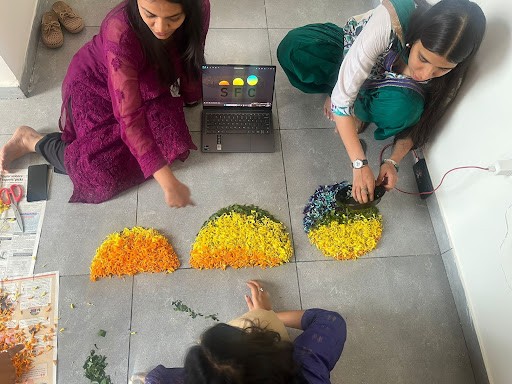
That same spirit of collective choice carried into Alwar. A strategy planning committee, with representatives from each team, was formed to provide a common framework for each team to use as they developed their workplans, and to flesh out an agenda that both provided a structure and a canvas for the kind of open-ended conversations that spark new ideas. Each team was asked to reflect on their journey so far – what worked, what didn’t – and sketch their vision for the future. They were also asked to identify the opportunities that exist to drive systemic changes, or the role we would play in creating those windows of opportunity where they didn’t. Reflecting the evolution of the ecosystem, they were also asked to contemplate the increasingly integrated nature of climate, energy and environment, and how that would reflect in cross-team work.
Preparing the presentations was a bottom-up effort. Each team member pitched their ideas in a space of open discussion and the best ones (as decided by the team) were developed to provide the presentation with the necessary direction and clarity. Colleagues debated, rewrote, and returned to drafts. Differences of opinion were not obstacles but part of the process, helping refine the distinctive contribution each team makes to our own work and to India’s climate, environment, and energy ecosystem. The presentations that emerged were not polished, final roadmaps, but starting points for deeper discussion.
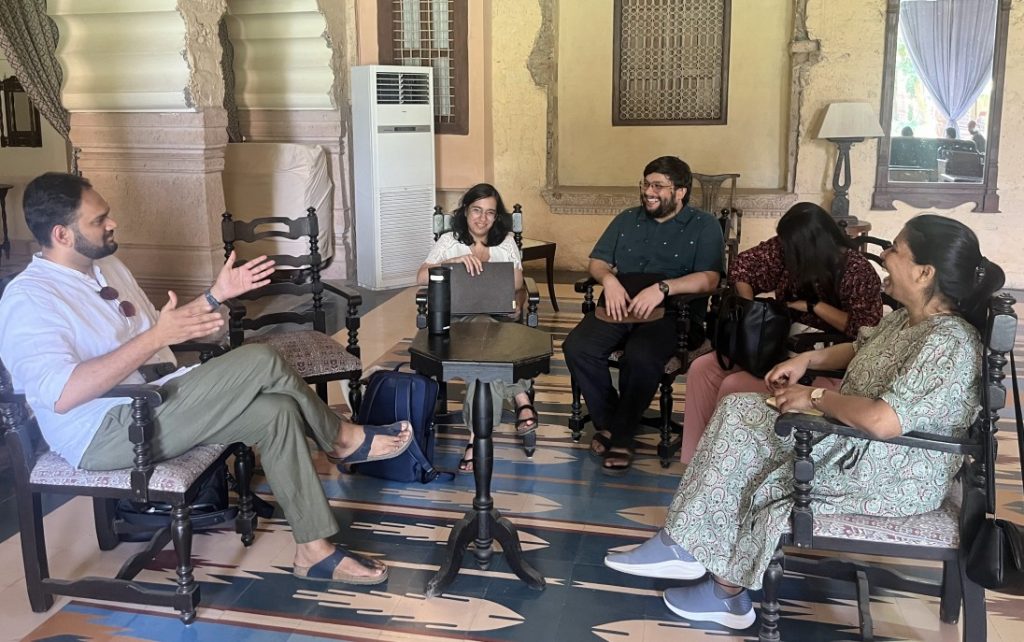
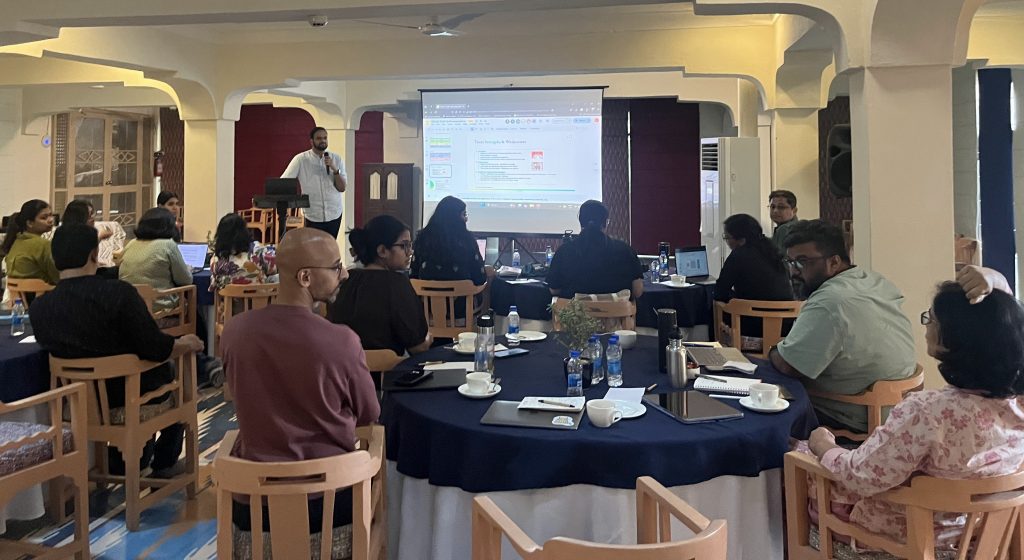
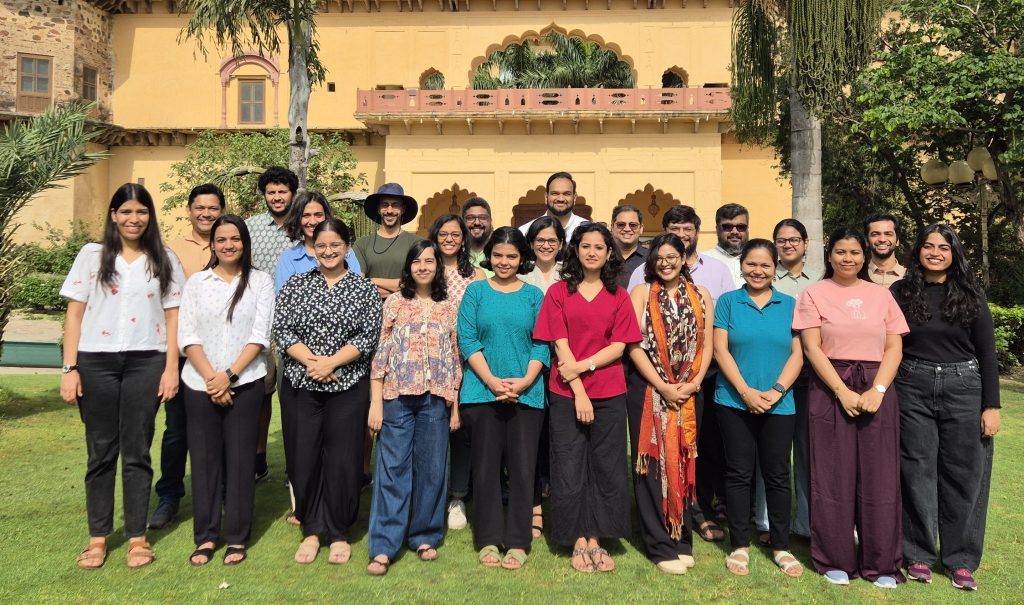
The discussions ranged from the micro (specific pieces of work) to the macro (global and national shifts that impact our work). Some examples included the ability of the Adaptation and Resilience team to knit together a cohesive story around three distinct strands of work: heat resilience, coastal adaptation, and forest fires. The Environmental Governance and Policy team debated how their work could aid in restarting somewhat stalled conversations around air pollution policy while keeping these conversations grounded in science and focused on people’s wellbeing. The Climate Policy team outlined new bets in green industrial policy, climate and trade, while also rethinking how to generate constructive insights on India’s long-term development and decarbonisation strategies. The Energy Transitions team made the case for shifting away from one-size-fits-all national targets to a more state-led approach and seeing the energy transition as an opportunity to drive rural productivity and livelihoods.
The discussions also pushed us to reflect on how we view impact. Our work lies upstream of policy implementation, posing challenges with respect to the measurement of “impact” in the traditional sense. We know that long-term systemic change does not come from a single piece of work or happen overnight, making it difficult to measure success. Impact, for us, is about making our research accessible, reaching people within and beyond traditional policy circles, and shifting discourse to reflect the way we view these challenges ourselves (e.g., climate policy as a driver of development and economic growth). This also meant looking inward at our own institutional processes, embedding systems thinking into how we plan, clarifying our theories of change, and recognising that our role lies in creating enabling conditions rather than implementing solutions ourselves. We recognise where our strengths lie, and maximising our impact means leveraging those strengths.
The road ahead
In many ways, the retreat felt like a return to those early days of brainstorming. As ideas flew across the room and voices challenged and built on one another, the underlying belief remained the same – it takes a community to build something special and to keep it alive.
The past two years have been a mix of experimentation, excitement, and patience. We have placed big bets, as have those that have supported us by taking a chance on us. Our work on heat adaptation has fed into and pushed national policy frameworks toward building long-term resilience while also acknowledging short-term responses. We have sought to reframe India’s air quality debate around the impact of air pollution on people’s health, rather than focusing solely on pollutant concentrations. Our work on strengthening air pollution regulators has inadvertently found an audience in the courts that are now driving action. Through long-standing partnerships, we have collaborated with states to enhance their capacities and expertise in facilitating India’s energy transition. The retreat also reminded us of the power of connections across teams, how adaptation work on heat overlaps with energy debates on grid resilience, how trade policy links to industrial decarbonisation, and how health-centered air quality research ties back into adaptation.
We came back with a clearer sense of the bigger picture: that climate change, energy transitions, and environmental challenges are not just crises to manage, but opportunities to shape India’s future. Some of our bets will pay off, others won’t. But even a few wins can enable the kind of systemic change we set out to pursue. How can we help states lead on climate action, how do we bridge across disciplines to stay relevant in a crowded ecosystem, and how do we measure impact when the biggest shifts are in narratives and institutions, not quick wins? The strategy retreat, much like good research, left us with more questions than answers, and that is exactly where we hoped to be.
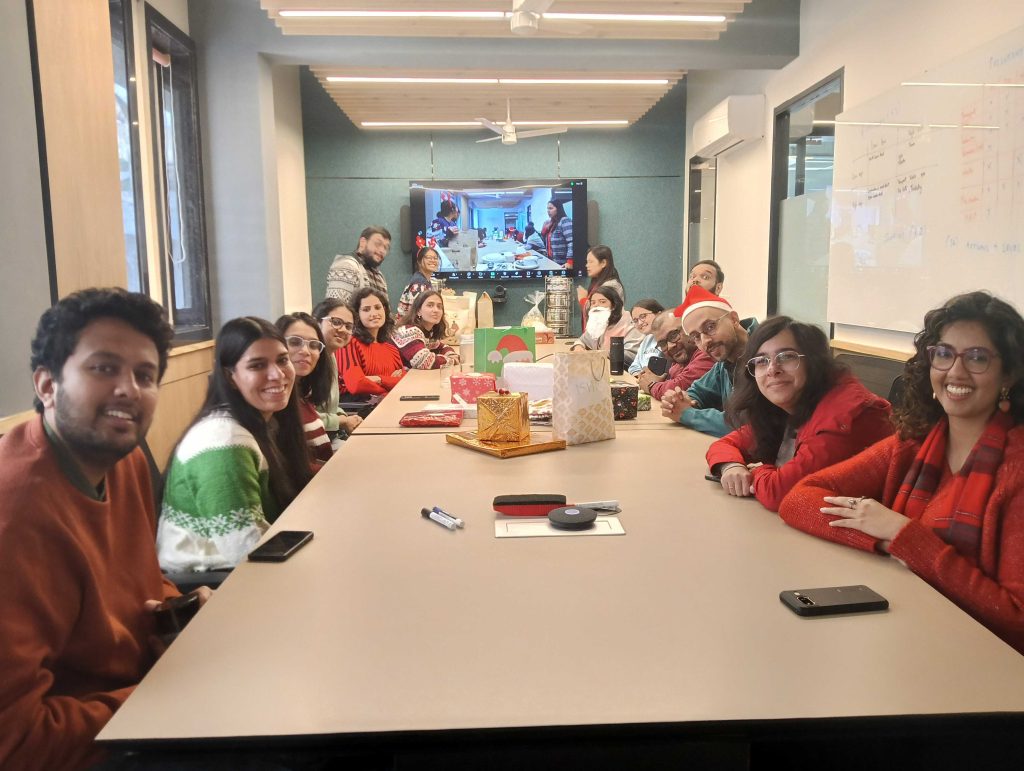
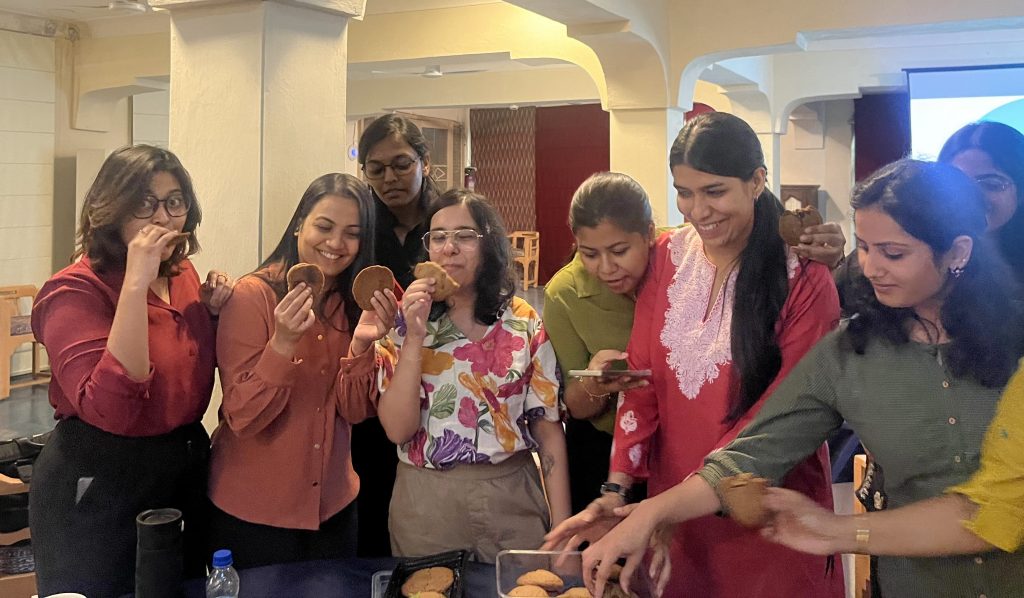
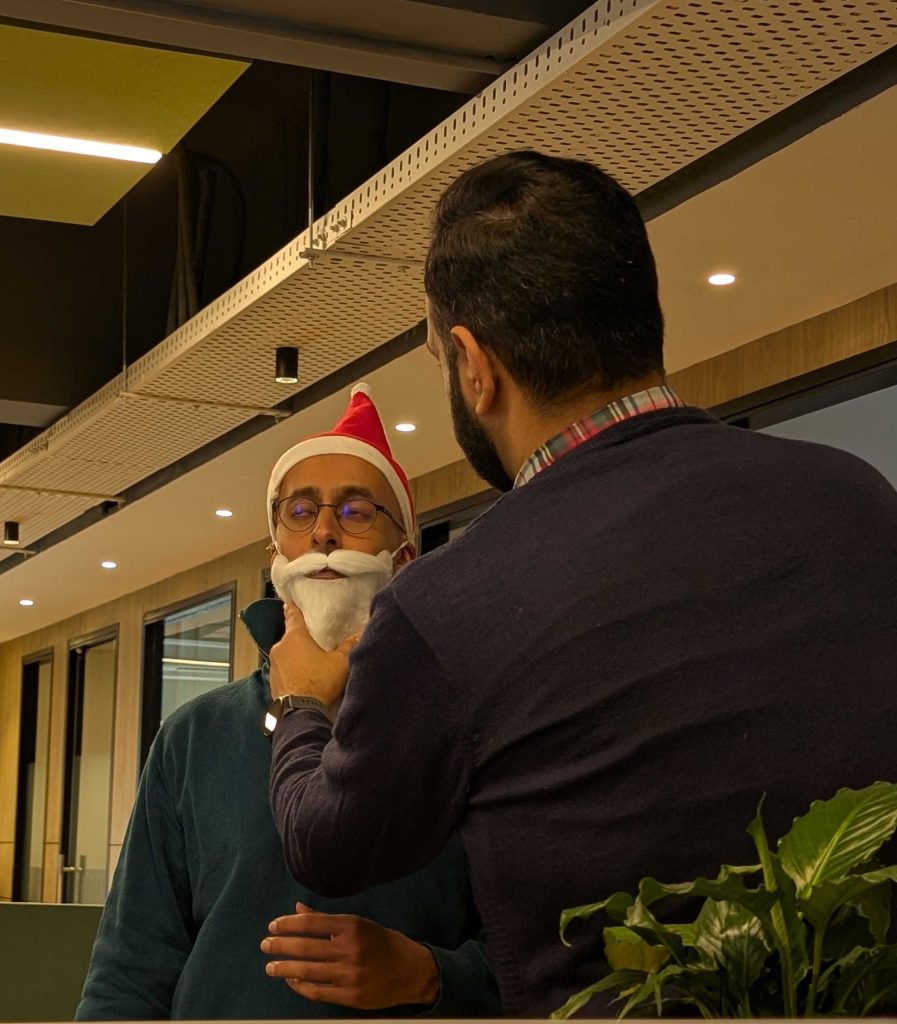
If there is one lesson from our journey so far, it is that institutions are sustained through both long-term strategic choices and daily acts that shape the positive experience of building something together. As many readers will agree, policy work is slow, demanding and can often be disappointing. What has kept our team growing and going in the meantime are the little things. The snack corner that’s endlessly replenished by returning travellers, mouth-watering cookies baked by a Fellow who understandably wishes to remain anonymous, the quiz nights, pictionary afternoons, friday chhole bhatures, mildly annoying pranks, cake day celebrations, and the lunchtime debates matter just as much as the big decisions about where to focus our work. Between them lies our collective labour of love, the committee-to-committee effort, and a steady churn of solid research.
We thank Sonali Verma and Bhargav Krishna for their contributions to this piece.




